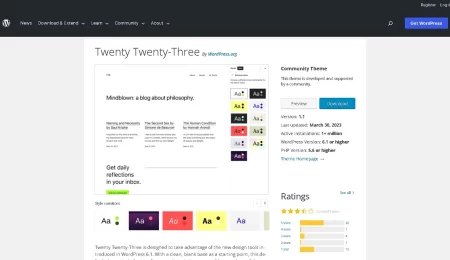Facebook for WooCommerce plugin for WordPress
Facebook for WooCommerce plugin for WordPress: Facebook for WooCommerce is a powerful plugin that seamlessly integrates your WooCommerce store with the social media giant, Facebook. This plugin offers a range of features and benefits to enhance your online business, boost sales, and improve customer engagement. By leveraging the reach and popularity of Facebook, you can expand your audience, increase brand visibility, and create a seamless shopping experience for your customers. In this article, we will explore the various aspects of the Facebook for WooCommerce plugin and guide you through the process of setting it up and utilizing its features effectively.
Benefits of Using Facebook for WooCommerce plugin for WordPress
Increased reach and visibility for products
By integrating your WooCommerce store with Facebook, you can tap into its massive user base and extend the reach of your products. With billions of active users, Facebook provides a platform to showcase your products to a wider audience, potentially attracting new customers and driving more traffic to your online store.
Enhanced customer engagement and interaction
Facebook allows for direct interaction with your customers, enabling you to build a stronger connection and foster brand loyalty. Through features such as comments, likes, and shares, customers can engage with your products and share their experiences with others. This social proof can influence potential buyers and contribute to the growth of your business.
Targeted advertising opportunities
The integration of Facebook and WooCommerce opens up a world of targeted advertising options. Facebook’s sophisticated ad targeting capabilities allow you to reach specific audiences based on demographics, interests, behaviors, and more. This enables you to tailor your advertisements to the right audience, increasing the likelihood of conversions and maximizing your return on investment.
Seamless product synchronization and catalog management
With the Facebook for WooCommerce plugin, you can effortlessly synchronize your product inventory between your WooCommerce store and Facebook. Any changes made to your product catalog, such as adding new products or updating prices, will automatically reflect on both platforms, saving you time and eliminating the need for manual updates.
Installing and Setting Up the Facebook for WooCommerce plugin for WordPress
To start utilizing the Facebook for WooCommerce plugin, follow these simple steps:
Login to your WordPress dashboard.- Go to the “Plugins” section and click on “Add New.”
- In the search bar, type “Facebook for WooCommerce” and hit enter.
- Locate the plugin developed by Facebook and click on “Install Now.”
- Once the installation is complete, click on “Activate” to activate the plugin.
After activating the plugin, you need to configure the settings to ensure proper integration between your WooCommerce store and Facebook.
- In your WordPress dashboard, navigate to “WooCommerce” and click on “Settings.”
- Select the “Integration” tab.
- Locate the “Facebook” option and click on it.
- You will be prompted to connect your WooCommerce store to your Facebook account. Follow the on-screen instructions to complete the connection.
- Once connected, you can customize various settings, such as selecting the Facebook Page to link with your store, enabling product synchronization, and setting up order tracking.
Creating a Facebook Shop
Having a Facebook Shop is an excellent way to showcase your products directly on your Facebook Page and allow customers to make purchases without leaving the platform. Here’s how you can create a Facebook Shop:
- Ensure that you have a Facebook Page for your business. If you don’t have one, create a new Facebook Page dedicated to your online store.
- In your Facebook Page settings, navigate to the “Templates and Tabs” section.
- Click on “Add a Tab” and select “Shop” from the available options.
- Customize the tab by adding a cover photo and a description that highlights your products and brand.
- Once the tab is added, click on it to configure your Facebook Shop settings.
- Connect your Facebook Shop with your WooCommerce store by selecting the appropriate option and following the instructions provided.
- Import your products from WooCommerce to Facebook by choosing the desired categories and confirming the import.
Your Facebook Shop will now be visible on your Facebook Page, allowing users to browse and purchase products directly from there.
Managing Products and Orders
With the Facebook for WooCommerce plugin, managing your products and orders becomes a streamlined process. Here’s how you can effectively handle these tasks:
- Synchronizing product updates: Any changes you make to your product catalog in WooCommerce, such as adding new products, updating prices, or modifying descriptions, will automatically sync with your Facebook Shop. This ensures that your products are always up to date across both platforms.
- Handling orders received through Facebook: When a customer makes a purchase through your Facebook Shop, the order details will be synchronized with your WooCommerce store. You can manage these orders alongside your regular WooCommerce orders, enabling you to fulfill them efficiently.
- Managing inventory and stock levels: The Facebook for WooCommerce plugin keeps track of your inventory, ensuring that product availability is accurate across platforms. When an item is sold through either WooCommerce or Facebook, the stock levels are updated accordingly to prevent overselling.
Leveraging Facebook Ads for WooCommerce
Facebook Ads provide a powerful advertising platform to promote your WooCommerce products to a highly targeted audience. By utilizing Facebook’s advanced targeting capabilities, you can create effective ad campaigns that drive traffic and increase sales. Here’s how you can leverage Facebook Ads for WooCommerce:
- Targeting specific audiences: Facebook allows you to define your target audience based on various criteria, such as location, age, interests, behaviors, and more. By understanding your ideal customer profile, you can create highly targeted ads that resonate with your audience.
- Creating dynamic ads for products: Dynamic ads allow you to showcase relevant products to users who have shown interest in similar items on your website or Facebook Shop. By retargeting these potential customers with personalized ads featuring products they are likely to be interested in, you can significantly improve conversion rates.
- Tracking conversions and measuring ad performance: Facebook provides robust tracking and analytics tools to monitor the performance of your ads. By analyzing metrics such as click-through rates, conversions, and return on ad spend (ROAS), you can optimize your campaigns and make data-driven decisions to improve results.
Integrating Facebook Messenger for Customer Support
Facebook Messenger offers an excellent platform for providing real-time customer support and building stronger relationships with your audience. Here’s how you can leverage Facebook Messenger for customer support:
- Enabling Messenger integration: The Facebook for WooCommerce plugin allows you to enable Messenger integration, enabling customers to contact you directly through Messenger for any inquiries or support they may need.
- Offering real-time customer support through Messenger: With Messenger integration, you can provide prompt and personalized customer support, addressing questions, resolving issues, and ensuring a positive shopping experience.
- Leveraging automated messaging and chatbots: You can automate certain aspects of customer support by setting up chatbots on Messenger. Chatbots can provide instant responses to common queries, guide customers through the purchasing process, and even suggest related products.
Best Practices for Facebook for WooCommerce plugin for WordPress Integration
To maximize the benefits of integrating Facebook with WooCommerce, consider the following best practices:
- Optimizing product images for Facebook: Ensure that your product images are high-quality, visually appealing, and optimized for Facebook’s platform. Use compelling visuals that grab attention and accurately represent your products.
- Crafting compelling product descriptions: Write persuasive and informative product descriptions that highlight the features, benefits, and unique selling points of your products. Use persuasive language and storytelling techniques to engage potential customers.
- Utilizing social proof and reviews: Leverage the power of social proof by showcasing customer reviews and testimonials on your Facebook Page and in your ads. Positive reviews can build trust and credibility, encouraging potential customers to make a purchase.
Monitoring and Analyzing Performance
Regularly monitoring and analyzing the performance of your Facebook for WooCommerce integration is crucial for making data-driven decisions and optimizing your strategies. Here’s how you can track and analyze performance:
- Using Facebook Insights to track performance metrics: Facebook Insights provides valuable data on engagement, reach, and conversions. Monitor key metrics such as post reach, engagement rate, click-through rate, and conversion data to assess the effectiveness of your Facebook integration.
- Analyzing sales and conversion data: Connect your WooCommerce store to analytics tools such as Google Analytics to track sales, conversion rates, and other relevant metrics. Analyze this data to identify trends, optimize your marketing efforts, and improve overall performance.
- Making data-driven decisions to improve results: Based on the insights gathered from Facebook and your analytics tools, make informed decisions to refine your strategies. Experiment with different ad formats, audience targeting, and messaging to continually improve your results.




Leave a Comment